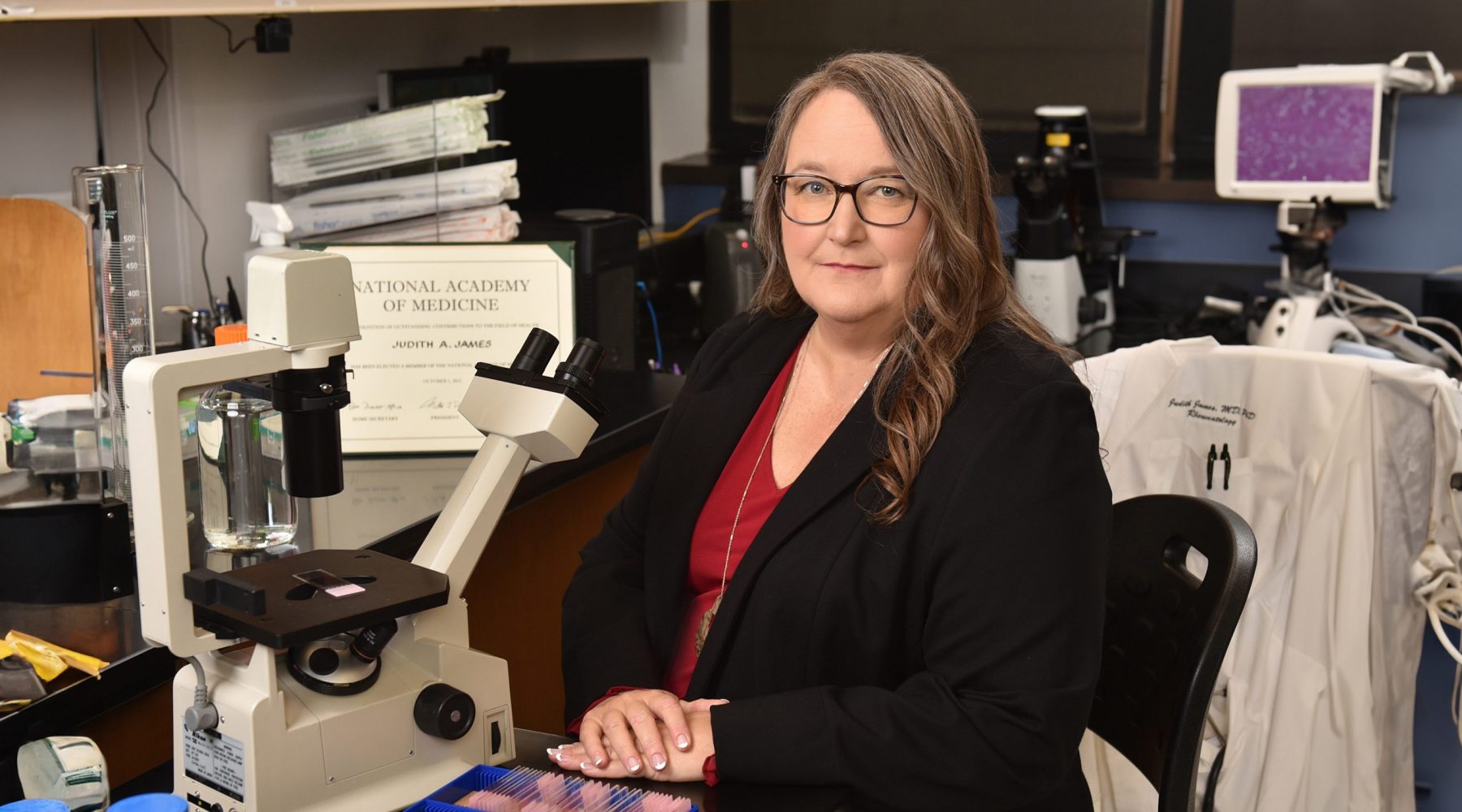The Oklahoma Medical Research Foundation will continue serving as one of seven research institutions nationwide tasked with better understanding autoimmune disease.
OMRF recently received a five-year, $3.8 million grant renewal from the National Institutes of Health to house an Autoimmunity Center of Excellence, or ACE. The nonprofit foundation has served in that capacity since 2009.
“This is the integration of basic science with clinical science,” said OMRF Executive Vice President & Chief Medical Officer Judith James, M.D., Ph.D., who leads the Oklahoma ACE. “The goal is to test new therapies through clinical trials, and ultimately to improve treatment options for the millions of Americans who live with an autoimmune disease.”
Autoimmune disease is a broad category of disorders in which the body’s proteins or cells attack its own tissues. According to the NIH, as many as 50 million Americans live with an autoimmune disease, making it third in disease prevalence only to heart disease and cancer.
OMRF’s two clinics treat more than 3,000 patients suffering from multiple sclerosis, lupus and other autoimmune disorders.
Research funded through the ACE network can have profound implications for people who live with an autoimmune disease.
For example, James and physician-scientist Eliza Chakravarty, M.D., determined from a six-year clinical trial that some lupus patients can safely stop taking medication. A separate OMRF discovery led to a biomarker test – now undergoing additional clinical trials – for more accurate diagnosis and prediction of disease flares in patients with lupus.
Two clinical trials are planned during the new grant period.
One would test whether an existing lupus medication can reduce the severity of symptoms of a rare autoimmune disease similar to MS called neuromyelitis optica.
Separately, a clinical trial for lupus patients would test a vaccine to prevent reactivation of Epstein-Barr virus, an extremely common virus that lies dormant in most people following the initial infection. In lupus patients, however, the virus is known to reactivate more frequently than in healthy people. This is especially true in lupus patients whose disease is active.
New for this grant period, OMRF will serve as the main biorepository for all human tissue and blood samples collected for the entire ACE network. Previously, each institution stored its own samples.
Of the seven ACE network locations, OMRF is the only one not on the East or West Coast, and it is the only one funded for each of the last four grant periods.
“This renewal by NIH recognizes something we’ve known for quite some time,” said OMRF President Andrew Weyrich, Ph.D. “Our team led by Dr. James includes some of the world’s finest scientific and medical minds working to better diagnose and treat these complex disorders.”
Other key OMRF scientists in the next phase of the Oklahoma ACE are Joel Guthridge, Ph.D.; Joan Merrill, M.D.; Cristina Arriens, M.D.; Bob Axtell, Ph.D.; Gabriel Pardo, M.D.; and Yang Mao-Draayer, M.D., Ph.D.
OMRF’s grant, No. 2UM1AI144292-06, was awarded by the National Institute of Allergy and Infectious Diseases, part of the NIH.



